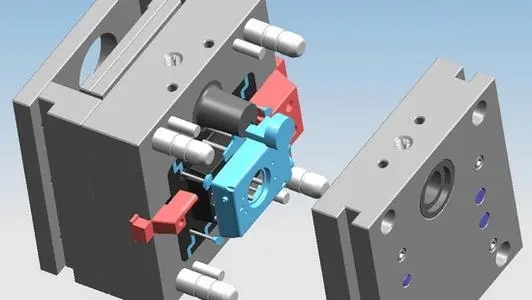Methods of improving the performance of die casting molds

In addition to the reasonable coordination of the matrix with sufficiently high strength and toughness, the surface properties of the mold are very important to the working performance and service life of the mold. These surface properties refer to: wear resistance, corrosion resistance, friction coefficient, fatigue performance, etc. The improvement of these properties is very limited and uneconomical by relying solely on the improvement and improvement of the matrix material, and through surface treatment technology, you can often get twice the result with half the effort, which is the reason why surface treatment technology has developed rapidly.
The surface treatment technology of the mold is a systematic engineering of changing the morphology, chemical composition, structure and stress state of the mold surface through surface coating, surface modification or composite treatment technology to obtain the required surface properties. From the surface treatment method, it can be divided into: chemical method, physical method, physical chemical method and mechanical method. Although new processing technologies aimed at improving the surface performance of molds continue to emerge, the main applications in mold manufacturing are nitriding, carburizing and hardened film deposition.
The nitriding process includes gas nitriding, ion nitriding, liquid nitriding, etc. In each nitriding method, there are several nitriding technologies, which can meet the requirements of different steel types and different workpieces. Because the nitriding technology can form a surface with excellent performance, and the nitriding process and the quenching process of the die steel have good coordination, at the same time, the nitriding temperature is low, and there is no need for intense cooling after nitriding, and the deformation of the mold is extremely small. Surface strengthening is the earlier nitriding technology, and it is also the most widely used.
The purpose of mold carburizing is mainly to improve the overall strength and toughness of the mold, that is, the working surface of the mold has high strength and wear resistance. The technical idea introduced from this is to use lower-grade materials, that is, through carburizing and quenching. To replace higher-level materials, thereby reducing manufacturing costs.
Hardened film deposition technology is currently more mature CVD, PVD. In order to increase the bonding strength of the surface of the film layer workpiece, a variety of enhanced CVD and PVD technologies have now been developed. Hardened film deposition technology was first applied to tools (knives, cutting tools, measuring tools, etc.) with excellent results. Many kinds of tools have adopted hardened film coating as a standard process. Molds have been coated with hardened film technology since the 1980s. Under the current technical conditions, the cost of hardened film deposition technology (mainly equipment) is relatively high, and it is still only applied to some precision and long-life molds. If a heat treatment center is established, the cost of coating hardened film will be greatly reduced. , If more molds adopt this technology, the overall level of mold manufacturing in our country can be improved.






